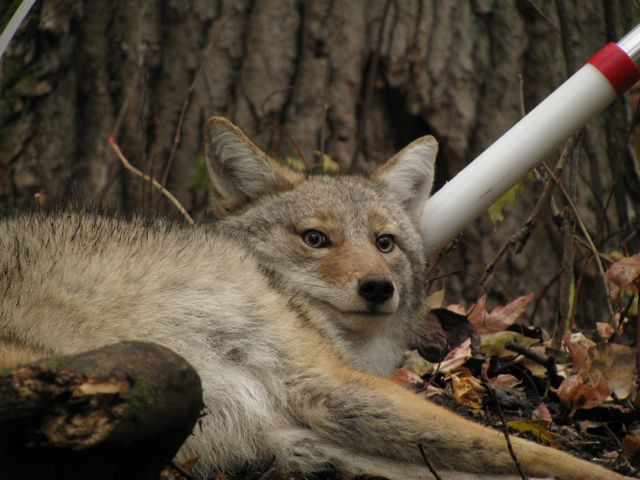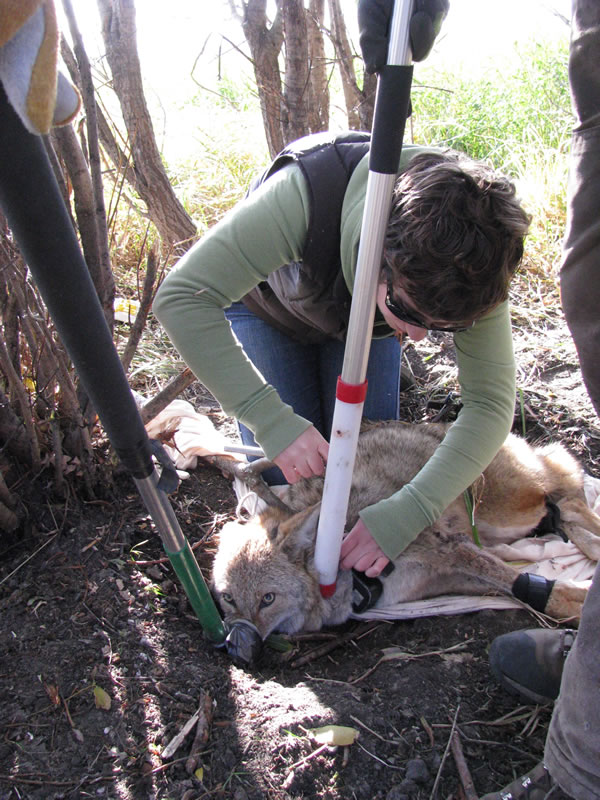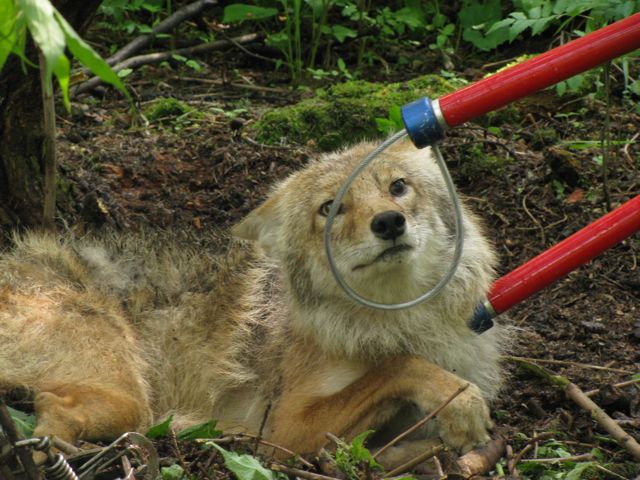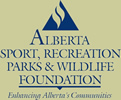
Major Questions
The Edmonton Urban Coyote Project aims to answer questions about urban coyote behaviour to help reduce the frequency of negative human-coyote interactions. These research questions include:
• Where do coyotes live in the city and what do they eat?
• What kinds of habitats do coyotes prefer?
• How do coyotes move through the city?
• How does disease prevalence and intensity differ between urban and rural coyotes?
• How does coyote diet affect the intestinal microbiome?
Our Research
2022-2024. M.Sc. student Abby Keller used remote cameras with track and hair tubes to study the attraction to birdseed in residential yards by coyotes and their prey. More info about her experiment is here. Abby also worked with the City of Edmonton to develop and interpret a survey about human attitudes concerening coyotes.
2021-2026. Ph.D. student Sage Raymond is studying how urban coyotes coexist with people by studying diet, movement, denning and pup-rearing behaviour, and problem-solving.
2022-2024. M.Sc. student Gabrielle Lajeunesse led a study of aversive conditioning by community members to teach greater wariness to coyotes in residential neighbourhoods of Edmonton. We based the program in communities with frequent past reports of coyotes listed here and trained volunteers with online material here. With the help of 120 wonderful residents in 71 communities, we conducted coyote patrols and, when conditions warranted it, aversive conditioning on bold coyotes between February and May. Here is an interim report of our results.
2018-2021. M.Sc. student Cassie Stevenson worked collaboratively with the City of Edmonton to place remote cameras in parks and natural areas throughout the city across a range of human density. To maintain the privacy of individuals, all photos were reviewed by automated software to detect and remove photos of people. The photos of wildlife revealed how use by coyotes and other wildlife varied among different areas, seasons, and times of day. This information is contributing to policies that promote coexistence of humans and wildlife. Between 2009 and 2014, we fitted Global Positioning System (GPS) collars on over 20 coyotes. These collars stored the location of the coyote every three hours, which we used to calculate home range sizes, habitat use, and movement rates using computer mapping software. This work was led by Maureen Murray with support from Animal Damage Control.Some conclusions of that work are described below. Copies of the publications cannot be provided on this website owing to copyright laws, but they can be found on researchgate here by searching for lead author Murray.
1. Coyotes with mange, a skin parasite, have larger home ranges, poorer diets, make more use of residential areas and are more active during the day, all potentially contributing to conflict with people (Murray et al., 2015 Proceedings of the National Academy of Sciences). 2. Coyotes that are active and cross roads only late at night are more likely to avoid collisions with vehicles (Murray and St. Clair 2015 Behavioural Ecology). 3. Urban coyotes have broader diets than rural animals; coyotes in conflict had less protein in their diets (Murray et al., 2015 Ecography). 4. Urban compost attracts coyotes, contains toxins, and may promote disease (Murray et al., 2016 Ecohealth). 5. Food, shelter and lack of fences attract urban coyotes to backyards (Murray and St. Clair 2017 Journal of Wildlife Management). |
 |









